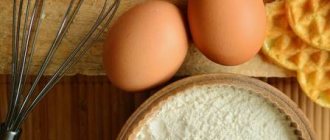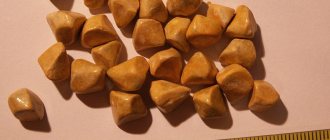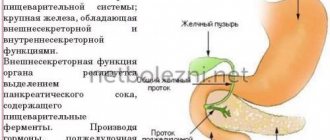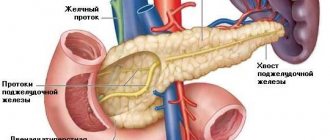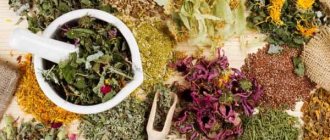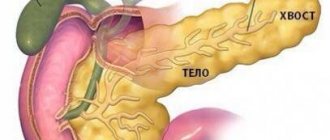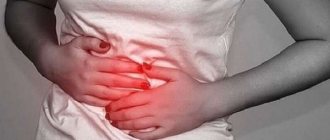During normal functioning of the pancreas, we, as a rule, are not particularly interested in either its location or its functions. However, the slightest deviation in the functioning of the pancreas unsettles us, forcing us to immediately consult a doctor.
The functioning of the entire organism depends on the condition of the pancreas, located behind the stomach and reaching a length of 14-22 cm in an adult. The famous ancient healers Hippocrates and Galen mentioned its ability to produce substances necessary for the body; in one of the descriptions that have reached us, the pancreas is even called the “finger of God.” Perhaps this comparison was due to the fact that problems with the pancreas in 70% of people occur when drinking alcohol; in 25%, deviations in the functioning of the pancreas are associated with diseases of the digestive system, which are often caused by overeating, lack of exercise, errors in diet, etc. . P.
What is the role of the pancreas in the body?
The main function of the pancreas is the secretion of pancreatic juice, which contains the most important food enzymes: trypsin, lipase, amylase, necessary for the processing of carbohydrates, fats, and proteins. In addition, if the functioning of the pancreas is disrupted, it becomes impossible to transport the necessary elements formed after the breakdown of food to various organs.
The structure of the gland contains the so-called islets of Langerhans - clusters of cells that secrete insulin, glucagon and other vital hormones responsible for metabolic processes in the body. For example, insulin, by ensuring the penetration of glucose into cells, promotes its absorption and reduction of blood sugar. Glucagon, on the contrary, is responsible for increasing sugar, preventing the development of hypoglycemia. In addition, the gland cells produce lipocaine, an element that prevents fatty degeneration of the liver. Moreover, the islets of Langerhans produce a polypeptide containing about 36 different amino acids, and it also controls the secretory function of the gland.
How does the gland work?
When food enters the stomach and moves into the small intestine, the pancreas begins to actively produce digestive enzymes, which are initially in an inactive form, since they are able to digest their own tissues. Their “activation” begins when they enter the intestines. After digestion is complete, the broken down substances are absorbed into the blood. In a healthy person, insulin is immediately released, which is necessary for the utilization of glucose. If there are problems with the pancreas, insulin production is reduced, which leads to hyperglycemia and the development of insulin-dependent diabetes mellitus.
What affects the condition of the pancreas?
Alcohol takes precedence among the negative factors that can lead to disruption of the pancreas. Abuse of alcoholic beverages leads to an inflammatory process, as a result of which the gland tissue degenerates. By the way, there is no direct connection between the duration of alcohol abuse and the development of the disease. Often, people who suffer from alcoholism for many years do not have any significant symptoms, while a person who practically does not drink strong drinks may develop a serious condition.
Also among the causes leading to the disease, concomitant diseases should be highlighted, for example, the presence of gallstones, infections or injuries. In addition, the development of the disease can be triggered by taking certain medications or allergic reactions, including to food or household chemicals.
Unfavorable factors, the presence of which can lead to illness, are frequent stressful situations or depression, during which the process of juice secretion changes.
Consequences
It should be understood that the pancreas is a very delicate organ, malfunctions of which negatively affect the general condition of a person. Pancreatitis leads to severe deterioration of the condition and is often incredibly life-threatening. Particularly dangerous are hemorrhagic and mixed pancreatitis.
It is the latter forms, together with necrosis, that most often lead to the death of the patient. Very often, acute pancreatitis requires immediate surgical intervention, which still may not lead to recovery.
What are the dangers of pancreatic dysfunction?
The most common disease among adults is pancreatitis, an inflammatory process in the pancreas that can occur in acute or chronic form. In acute pancreatitis, the pancreatic cells literally “melt”; as the inflammatory process progresses, it affects deeper tissues, necrosis develops, and the structure and functions of the organ are disrupted. Moreover, the process affects the work of other organs, respiratory, cardiovascular, and renal failure develops. In this situation, patients need emergency medical care.
In the chronic form, the disease is not so aggressive, but irreversible changes occur in the gland itself, the cells of which are replaced by connective tissue, and the production of digestive enzymes becomes impossible. As a result, intestinal pathologies develop; diabetes mellitus is also one of the most common. In addition, the development of serious diseases such as cysts, abscesses and even pancreatic cancer cannot be ruled out.
Complications and severe forms of the disease
The consequences of gland failure include:
- Hemorrhagic pancreatic necrosis. The pathological condition is accompanied by bleeding, which poses a danger to the patient's life.
- Severe intoxication of the body. Accompanied by dysfunction of all organs and systems.
- Malignant tissue degeneration. With prolonged inflammation, pancreatic cancer develops - an aggressive malignant tumor that metastasizes early.
[morkovin_vg video=”h3hCo8pu3_A;-wzWfJqSvL4;ofHwcF9oM9Y;nnONeMon-Ec”]
How to recognize pancreatitis and what are its main symptoms?
Pain is the main sign of trouble
Pain sensations can be either dull and pulling, or cutting; the nature of the pain depends on the volume of the lesion, the presence of edema or necrosis, and the involvement of surrounding tissues in the process. Often the pain can be girdling, radiating to the hypochondrium, behind the sternum, collarbone or back - this is due to the location of the main focus of the pathology.
Dyspeptic disorders
Nausea, vomiting, stool disorders that appear at the onset of the disease and are associated with errors in diet. With intense manifestations, dehydration is possible; in severe cases, disruption of the heart and the development of multiple organ failure cannot be ruled out.
Skin changes
Pallor and jaundice appear as a result of compression of the bile ducts due to swelling of the gland, cyanosis of the skin of the abdomen is caused by poor circulation, etc. In acute pancreatitis, subcutaneous nodules up to 3 cm in size, petechiae on the buttocks can be detected, and the presence of rashes on the skin may indicate a chronic form. Clinical manifestations of pancreatic diseases are very diverse; there are characteristic symptoms, in the presence of which a doctor may suspect pancreatic pathology.
Symptoms of a dangerous condition
The disease is characterized by the following manifestations:
- Acute pain localized around the navel and in the stomach area. the intensity of unpleasant sensations increases after a heavy feast, when drinking alcohol is combined with eating fatty foods.
- Stool disorder. Prolonged constipation is abruptly replaced by diarrhea, and bloating appears.
- Nausea, vomiting, belching. These symptoms are accompanied by malabsorption of nutrients, which causes the patient to rapidly lose weight.
- Increased heart rate, drop in blood pressure. Accompanied by pallor and cyanosis of the skin. These signs indicate poisoning of the body, leading to disruption of the blood supply to tissues.
- Signs of obstructive jaundice. The skin and sclera take on a yellowish tint, and pinpoint hemorrhages appear on the stomach and face.
- General weakness, increased fatigue. They arise due to poisoning of the body with tissue breakdown products during pancreatic necrosis.
- The appearance of fatty inclusions in stool.
- Signs of diabetes. These include dry mouth, constant thirst, tremors of the limbs, chronic fatigue.
So what should we do?
Do you have abdominal pain - unbearable or squeezing, like a hoop, preventing you from taking a comfortable body position, nausea and vomiting, are you worried about your heartbeat? You need to see a doctor immediately! Before the ambulance arrives, you should stop drinking and eating - this can prevent the production of enzymes and irritation of the pancreas. Taking painkillers is strictly prohibited; a heating pad on the stomach will also only cause harm.
Of course, symptoms of pancreatic diseases may be similar to those of other pathologies. Therefore, only a doctor can recognize the cause of deterioration in health. For this purpose, today there are various and effective diagnostic methods, and attempts at self-treatment will only lead to the loss of precious time.
Possible problems with pancreatitis
During attacks of acute pancreatitis, girdle pain occurs in the abdomen, in the pit of the stomach and in the left hypochondrium. Incompetent treatment can lead to serious problems and transformation of the process into a chronic form, which is characterized by:
Chronic pancreatitis can cause infectious inflammation in the gland, the formation of ulcers and erosions, and bleeding. If chronic pancreatitis is started, irreversible processes such as lipomatosis, necrosis and fibrolipomatosis can begin.
With a long duration of the chronic stage, the endocrine function of the pancreas may be disrupted (a decrease in the amount of insulin secreted). Insulin deficiency, in turn, leads to diabetes.
How to eat if you have pancreatic diseases?
In the acute period or during exacerbation of a chronic disease, it is important to reduce the load on the pancreas. In the first days, food is excluded, but as the condition improves, the diet gradually expands, starting with weak tea, decoctions, pureed soups, cereals, etc. Gradually, low-fat fermented milk products, low-fat meat and fish, baked, boiled or cooked are added to the menu steamed grated fruits and vegetables, dried bread. It is recommended to limit salt intake and eat 6-7 times a day in small portions.
Fatty, spicy, smoked and fried foods should be excluded from the diet; fresh baked goods, nuts, strong broths, and mushrooms are not recommended. You should also avoid chocolate, coffee, carbonated drinks, and alcohol is strictly prohibited.
Unfortunately, a patient with pancreatic disease must adhere to a diet constantly; even during exacerbations, the intake of fats should be limited. In addition, depending on existing concomitant diseases and complications, there may be restrictions on the consumption of certain foods. In particular, with the development of diabetes mellitus, the basis of nutrition is the restriction of simple carbohydrates.
Treatment and prevention
Treatment of acute pancreatitis and pancreatosis is carried out in a hospital setting. At the hospital, the patient is prescribed diuretics to relieve spasms and remove toxins. If necessary, analgesics, anti-emetics, antimicrobial and immunostimulating agents are used.
In the first days of treatment, patients must refuse food. And in the following weeks and months the patient will have to follow a special diet.
If traditional therapy is ineffective or inappropriate, surgical intervention is performed; if pus accumulates in the peritoneum, peritoneal lavage is performed. Necrotic tissue of the organ is removed; in case of a cyst, resection is performed; in case of cancer, chemotherapy or radiation therapy is performed.
Chronic pancreatitis during an exacerbation is treated with dietary nutrition. To prevent pancreas failure, sweet, spicy, fatty and salty foods are excluded from the diet. Alcohol should be avoided altogether.
As a preventive measure, it is useful to replace strong tea and coffee with herbal decoctions of lingonberries, nettles, rosehips or dandelions. If several of the above symptoms appear at once, you should immediately contact a gastroenterologist or endocrinologist.
Information about the signs of pancreatic diseases is provided in the video in this article.
Inflammation of the pancreas, a large organ that produces digestive enzymes and hormones, is called pancreatitis. It may be a short-term illness or a long-term progressive inflammatory disease that affects the functioning of the pancreas. The condition causes abdominal pain that can range from mild to severe.
There are two types of pancreatitis: acute and chronic. When inflammation develops quickly, such as over several days, it is called acute pancreatitis. Although sometimes quite serious, such inflammation usually does not cause any permanent harm and goes away completely. Chronic pancreatitis is a long-term and permanent inflammation. Although it is not as painful as a severe case of acute pancreatitis, it is still dangerous.
Text continues after advertisement
People with pancreatitis tend to feel very sick all the time. Pancreatitis is usually the result of gallstones preventing the release of digestive enzymes or from drinking strong alcoholic beverages. Some other causes of pancreatitis can be caused by injury, surgery, medications, and even metabolic disorders. Globally, 4 out of 100,000 people suffer from acute pancreatitis every year.
In approximately 30% of patients with acute pancreatitis, the cause of the disease is unknown. Almost 45% of patients with chronic pancreatitis suffer from this condition due to long-term alcohol consumption. Pancreatitis is more common in men than in women.
At the first signs of pancreatitis, you must immediately stop eating and fast until the pain disappears! If the symptoms of the disease are severe, even tea is not allowed. The fasting period lasts at least three days, after which the patient can gradually introduce dietary foods into the diet.
Diet after an attack of pancreatitis
For a month after an exacerbation, the patient should adhere to a special diet consisting of food that does not burden the pancreas.
In this regard, sour, spicy and fatty foods should be excluded from the diet, sausages, sausages, smoked meats and offal should be avoided, and strong broths, caviar, mushrooms and sauerkraut should be avoided. All kinds of pickles, canned food, as well as fatty meat and fatty fish (sturgeon, halibut, stellate sturgeon, mullet) should also not be on the table.
You should refrain from dishes using legumes, nuts, millet and black bread, fresh pastries, pastries and pies. Ice cream, caramel, citrus fruits, as well as chocolate, cocoa, coffee and carbonated drinks should not be consumed.
You should not get carried away with fresh fruits, which are often used to feed a sick relative. The juice effect of most raw vegetables, herbs and fruits will not benefit the pancreas. A banana or an apple a day certainly won't harm your health, but if you decide to eat an apple, it should be non-sour and better baked. In general, it is better to eat vegetables and fruits boiled or stewed.
As for the food allowed for consumption, this list should include: lean fish and lean meat, boiled pasta and vegetable soups, cereal porridge, fruits and weak tea.
Drug treatment of pancreatitis
Of course, it is not possible to restore the activity of the pancreas with diet alone, and therefore doctors prescribe non-narcotic analgesics (Diclofenac) as well as antispasmodics (Duspatalin, No-shpa) to people with acute pancreatitis. For extremely severe pain that cannot be treated with the medications described above, the patient is given the drug Octreotide, which suppresses the secretion of pancreatic hormones, thereby reducing pain.
If we talk about the chronic form of the disease, then exacerbation of chronic pancreatitis is treated with the same drugs as the acute form of the disease. However, if acute pancreatitis passes without a trace and does not require long-term treatment, the chronic form of the disease requires constant, long-term use of the enzyme preparations listed above.
1. Potato juice
To relieve spasms, inflammation, and also reduce the production of digestive enzymes, you can take freshly squeezed potato juice. You need to drink it twice a day, 1 glass two hours before meals. The course of treatment is 14 days.
2. Royal jelly
One of the most effective treatments for pancreatitis is royal jelly. The unique composition of this product, containing 22 types of amino acids, vitamins, minerals and enzymes important for the body, is able to improve the activity of the pancreas in the shortest possible time. To combat inflammation of this organ, the patient is recommended to dissolve 1 tablespoon daily.
3. Flax seeds
Flaxseed can normalize the activity of the digestive system and, in particular, the pancreas. In addition, this cereal perfectly cleanses the stomach, envelops its walls and reduces the acidity of gastric juice. Thanks to this effect on the body, flax seeds, when used regularly, reduce the unpleasant symptoms of pancreatitis.
4. Burdock root
A good remedy for treating pancreatitis is burdock decoction. To prepare such a medicine, 2 tbsp. crushed burdock root, pour 800 ml of boiling water and leave for four hours in a warm place under the lid. After this, the mixture is sent to the stove and boiled over fire for 15 minutes. The cooled product should be taken ½ glass three times a day after meals.
Is it possible to maintain the health of the pancreas?
The pace of today's life dictates its own conditions; snacking instead of a full lunch, dry meals, excess fried or smoked meats, failure to observe the optimal break between meals, etc. have become the norm. The situation is aggravated by the stress that awaits us at literally every step. With such a lifestyle, the disease will not keep itself waiting.
As a preventive measure, unfavorable factors that can provoke the disease should be excluded. Regular and adequate physical activity will help combat inactivity. What if you don’t have enough time to play sports? Even walking can easily replace going to the gym.

